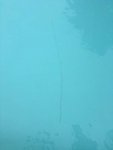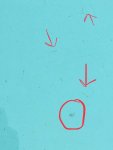Hi there-
I have owned pools past 10 years and our current pool was re-plastered about four years ago. Recently I am starting to notice what looks like rust stains appearing in the bottom of the pool per the picture attached. I also feel like we are starting to get more of these raised bumps in the surface (circled in picture). This morning I was really concerned when I was vaccuming out the pool and saw a 4-5 ft brown line in the below picture.
About a month ago we had part of the plaster lift up and I had the people who replastered the pool patch it.
Any thought or suggestions on what may be happening would be appreciated!


I have owned pools past 10 years and our current pool was re-plastered about four years ago. Recently I am starting to notice what looks like rust stains appearing in the bottom of the pool per the picture attached. I also feel like we are starting to get more of these raised bumps in the surface (circled in picture). This morning I was really concerned when I was vaccuming out the pool and saw a 4-5 ft brown line in the below picture.
About a month ago we had part of the plaster lift up and I had the people who replastered the pool patch it.
Any thought or suggestions on what may be happening would be appreciated!




 As a wild card effort, you could test some of those stains with a thin sock/nylon filled with some crushed Vitamin C tabs in it to see if they are iron, but I have a feeling those are relate to the plaster or what's underneath. For example, rebar, wire ties, etc. Some areas might possibly be calcium nodules, but hard for me to tell at this point. The fact you had plaster separate before adds to those concerns.
As a wild card effort, you could test some of those stains with a thin sock/nylon filled with some crushed Vitamin C tabs in it to see if they are iron, but I have a feeling those are relate to the plaster or what's underneath. For example, rebar, wire ties, etc. Some areas might possibly be calcium nodules, but hard for me to tell at this point. The fact you had plaster separate before adds to those concerns.